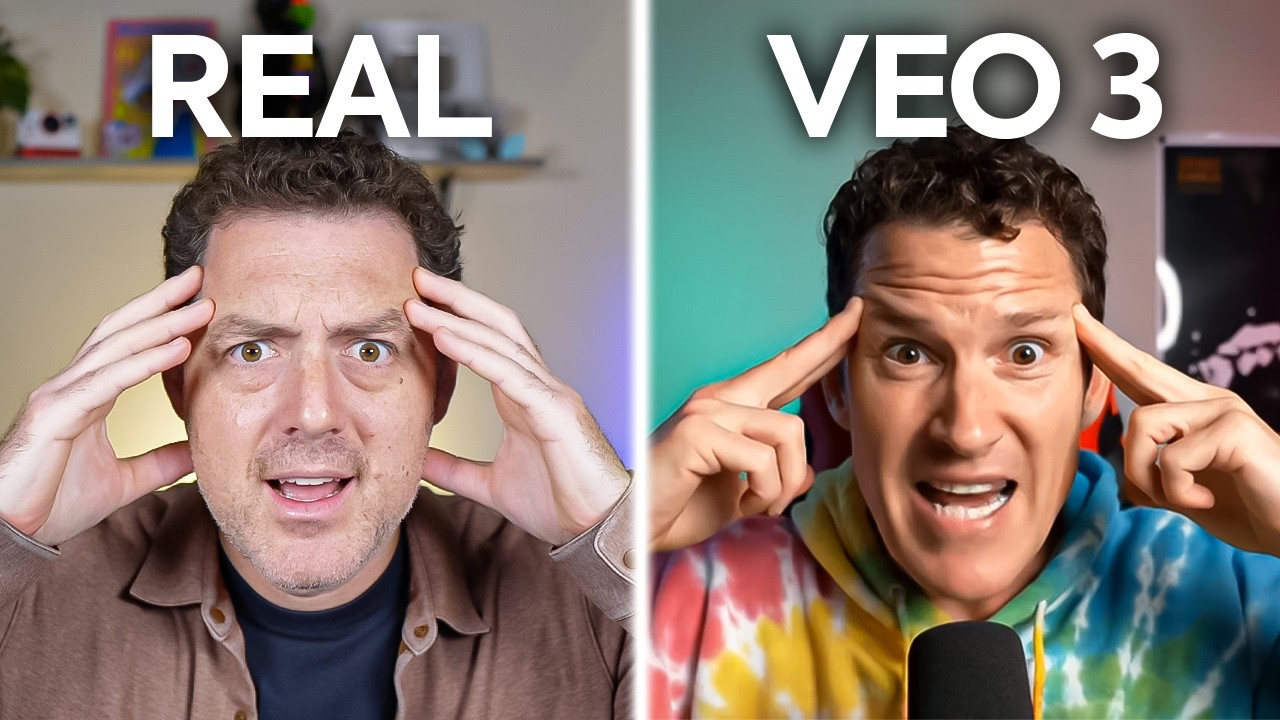The video highlights VEO 3’s impressive ability to generate hyperrealistic videos and images from prompts, showcasing its versatility across various genres and complex scenes. While acknowledging some current limitations, the creators emphasize its potential to revolutionize content creation, humorously suggesting it might even threaten jobs in the industry.
The video showcases the impressive capabilities of VEO 3, an advanced AI tool that generates hyperrealistic videos and images from prompts. The creators demonstrate how V3 can produce realistic street interviews, complete with convincing dialogue and expressions, even capturing tipsy or drunk individuals. They highlight the AI’s ability to create detailed scenes like trains colliding, Rubik’s Cube simulations, meme recreations, and various creative concepts, emphasizing how quickly and effectively it can generate complex visuals.
Throughout the video, the creators experiment with different prompts, noting the strengths and limitations of V3. For example, they attempt to generate a train crash, which results in trains not on the same track and exploding unexpectedly, illustrating some of the AI’s current shortcomings in physics and scene coherence. They also test the AI’s ability to animate objects like Rubik’s Cubes and create intricate scenes, often finding that while the visuals are impressive, the animations or interactions sometimes fall short of expectations.
The video also explores V3’s versatility in producing content across genres, including food, sci-fi, horror, and humor. They generate scenes of food ingredients dropping onto a bun, a cell-shaded human, a cowboy on a motorcycle jumping through fire, and even a hyperrealistic version of the game Portal. The AI’s ability to craft detailed, visually stunning scenes is consistently highlighted, though some prompts result in less accurate or surreal outputs. The creators emphasize that the AI’s visual quality is remarkable, even if scene logic or specific details sometimes miss the mark.
Further, the video demonstrates V3’s potential for storytelling and content creation, such as making a Jurassic Park scene, a fake alien invasion, or a humorous plastic commercial. They showcase how the AI can produce entire videos with complex interactions, dialogue, and sound, including music and voiceovers. The creators note that the AI can even generate realistic social media videos, like TikTok clips, with convincing interactions, emojis, and live comments, illustrating its potential to revolutionize digital content production.
In conclusion, the video underscores the transformative power of VEO 3 for creators, filmmakers, and marketers, highlighting its ability to produce highly detailed, realistic videos rapidly. While acknowledging some current limitations, the creators are optimistic about the future improvements and the profound impact this technology will have on content creation. They encourage viewers to explore V3’s capabilities and consider its implications, jokingly warning that it might even threaten jobs, but ultimately emphasizing that AI-generated content is set to change the landscape of media and entertainment dramatically.
